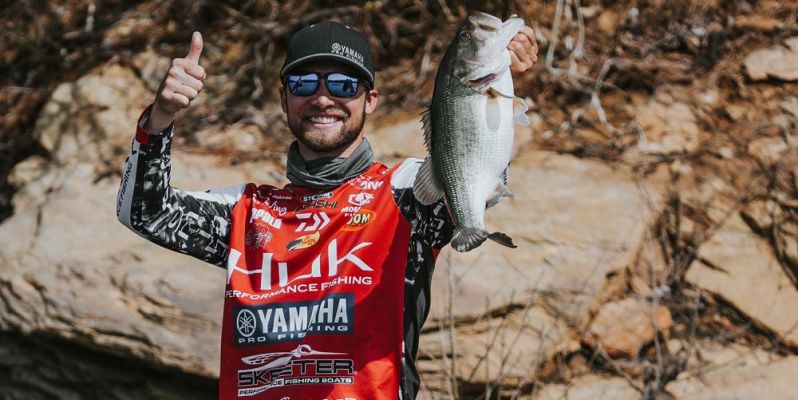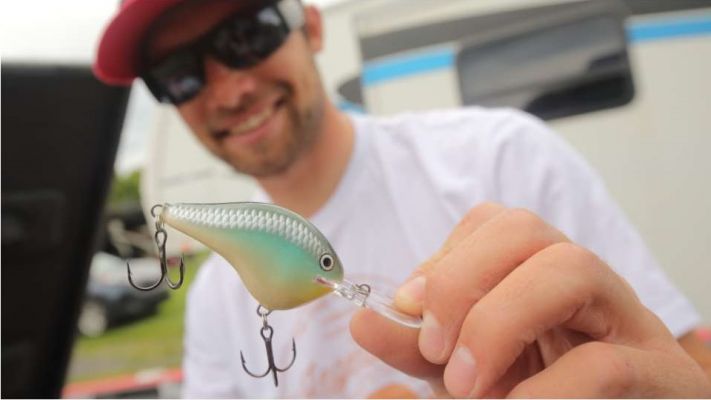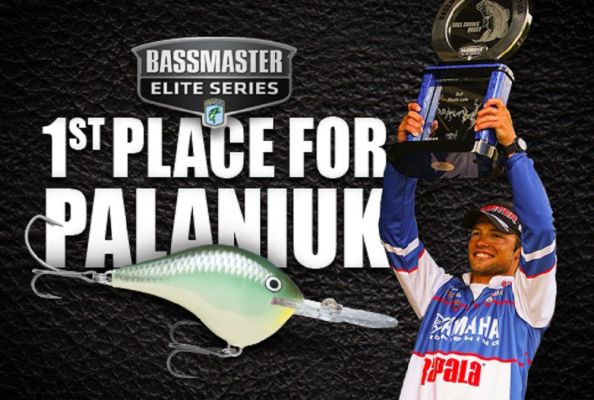Late Summer Cranking with Brandon Palaniuk
Throwing a crankbait is a proven way to catch late-Summer bass no matter where you may live. This category of lures is a useful tool for catching bass that are in a mix of different depths, as they often are during the summer. Brandon Palaniuk knows that the best approach is to have a variety of them ready, depending on where he is fishing and how deep he plans to fish.
Which Depth to Crank?
When asked what his favorite late-summer crankbait is, Palaniuk paused. “That is such a hard question because it depends on so many factors. On shallow lakes and rivers, it might be something that dives less than six feet, and on deep ledges, it could be a deep diver,” he said.
Besides just the depth of the water, Palaniuk added that regional differences also come in to play.
“Around where I live in the Pacific Northwest, the lakes are really deep, but the bass stay pretty shallow because the water is relatively cool and there is healthy vegetation in shallow water,” said the Idaho pro.
“This is the case in all northern waters, and the best summer crankbait might be a shallow one.”
With that in mind, he keeps plenty of crankbaits with him no matter where he goes, and one of his favorites is the Rapala DT series.
“They are really simple to figure out, ‘DT’ stands for ‘dives to’ and they are available in everything from a DT-4 to a DT-20. On some waters, the DT-6 or DT-10 is my favorite, and for deep bass, I use the DT-16 and DT-20 quite a bit,” added Palaniuk.
READ RELATED: How-To Tokyo Rig Like Mike Iaconelli
Retrieves and Line Size
Crankbaits are great because you can simply crank them back in and catch fish, but Palaniuk has learned a few tricks over the years when it comes to retrieving them.
Many times, he chooses a DT-6 when fishing around shallow grass, but he will also opt for a DT-10 to catch those same bass.
“I have found that you want just barely to tick the top of the grass to get bites,” he shared. “If you retrieve the DT-10 with your rod held up high it makes it easier to control the bait, and it is easier to rip it from the grass because the bait is not digging down into it as much.”
Another typical summer approach is to fish deep brush piles with a crankbait, and he will use the appropriate crankbait depending on their depth. This can be a risky practice with two sets of treble hooks and wood, but Palaniuk has learned a way to avoid some of these snags.
“As you get close to the brush, you will feel a ‘mushy’ feeling in your line. I continue with a straight retrieve but slow down just a little,” he said. “The bill will deflect off of the cover if you are pointing your rod right at it.”
When it comes to line size, Palaniuk prefers to go on the lighter side.
“I prefer a 10 or 12-pound fluorocarbon. The diameter is small enough to keep the bait down, and I feel like the baits run better on light line,” he added.
Cranking for Pressured Fish
Most bass fishing occurs in the spring and summer months.
The weather is nice, and everyone from casual to the hardcore anglers is out when the air temperatures are pleasant. This can lead to more fishing pressure and is part of the reason why Palaniuk likes Rapala’s DT series.
“They have a different presence in the water since they are a mass-produced balsa bait. They are more natural and a toned-down action,” Palaniuk said. “So many plastic crankbaits on the market have an aggressive wobble and wide swings to each side. That is what most people are throwing and why the DTs are so good for pressure fish.”
READ RELATED: Up and Coming from Rapala and VMC
BP’s Colorful Thoughts
Crankbaits come in a rainbow of colors, but Palaniuk keeps it reasonably simple anywhere he is fishing.
“My go-to is Rapala’s Blueback Herring color. This is the color I used when I won my first Elite Series event on Bull Shoals (Arkansas). I always have it on because it matches what the bass are eating,” he said. “It has a good hue and imitates shad, ciscoes, smelt, and other baitfish.”
When fishing northern waters, he likes a color called Ike’s Smash. “It doesn’t match exactly to bluegill, sunfish, or perch, but it looks a little bit like all of them,” he said.
On the other end of the spectrum, he is a fan of bright colors for specific situations.
“There are times when you want a bright color to get reaction bites or when fishing dingy and tannic water,” he shared. In those cases, he likes colors called Caribbean Shad or Old School.
Crankbaits are a useful tool most every month of the calendar, but they shine during the summer months. By having an arsenal of baits with different diving depths, you can target bass in just about any depth.






 Advertising
Advertising